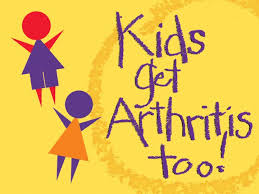Child Arthiritis
Diseases can come in any form and shape. However, there are a few of them that we assume only affect adults.
This notion needs a raincheck!
Although arthritis has been a problem more evidently found in adults, children too are seen affected by it. More commonly known as Juvenile Arthritis, this condition is caused by the inflammation of the joint (where two or more bones meet). If your child has been complaining of pain, swelling, stiffness or loss of motion lately, it is advisable to seek help from a doctor at the earliest.
Types of Juvenile Arthritis :
Several types of arthritis affect children; however, the most common type is called Juvenile Idiopathic Arthritis (idiopathic means “from unknown causes”). It includes six subtypes,
Oligoarthritis
Polyarthritis
Systemic
Enthesitis-related
Juvenile psoriatic arthritis
Undifferentiated
Apart from this, other types of Juvenile Arthritis are,
Juvenile dermatomyositis, which causes skin rash and muscle weakness on the eyelids and the knuckles.
Juvenile lupus, which can affect many areas of the body such as the skin, kidneys, joints, blood, etc
Juvenile scleroderma, which causes the skin to harden and tighten
Kawasaki disease, which can lead to heart complications due to blood-vessel inflammation.
Mixed connective tissue disease, which includes certain features of arthritis, lupus dermatomyositis, and scleroderma.
Fibromyalgia, which causes stiffness, aching, fatigue, disrupted sleep and a few more problems
Causes of Juvenile Arthritis :
Juvenile arthritis is an autoimmune disorder, wherein the human body attacks a few of the body’s own healthy cells and tissues. While experts are still looking for the possible cause of this condition in children, genetics, and environmental factors can be one of the many reasons.
Symptoms of Juvenile Arthritis :
A rheumatic disease, inflamed supporting structure(s) causes the loss of function in juvenile arthritis. It can also involve internal organs in a few cases.
Children suffering from this problem might not show any symptom as it depends on the type of arthritis. A few symptoms you must never ignore are,
Joint stiffness, especially in the morning
Pain, swelling, and tenderness in the joints
Limping
Persistent fever
Skin Rashes
Weight loss
Fatigue
Irritability
Eye redness or eye pain
Blurred vision
Diagnosis for Juvenile Arthritis :
As the symptoms vary from type to type, and may also be associated with some other disease, diagnosing juvenile arthritis can be difficult. There is no particular test for this, however, it may start with the doctor excluding other conditions. A few of the tests that might be ordered are,
Complete blood count (white cells, red cells, and platelets)
Lab tests on urine
X-rays to scan the bones Imaging tests
Blood culture
Tests for viruses and Lyme disease
Bone marrow exam
Erythrocyte sedimentation rate
Test for rheumatoid factor
Antinuclear antibody test
Joint fluid sampling
Synovial tissue sampling
Living with kids Arthritis not only affects the child but the whole family. While it is crucial that you get your child diagnosed and treated at the earliest, a few ways to support the child at school and home are,
Learning as much as you can about juvenile arthritis and its treatment
Joining a support group Treating your child as normally as possible
Encouraging exercise and physical therapy every day
Talking to your child about his or her condition and feelings

